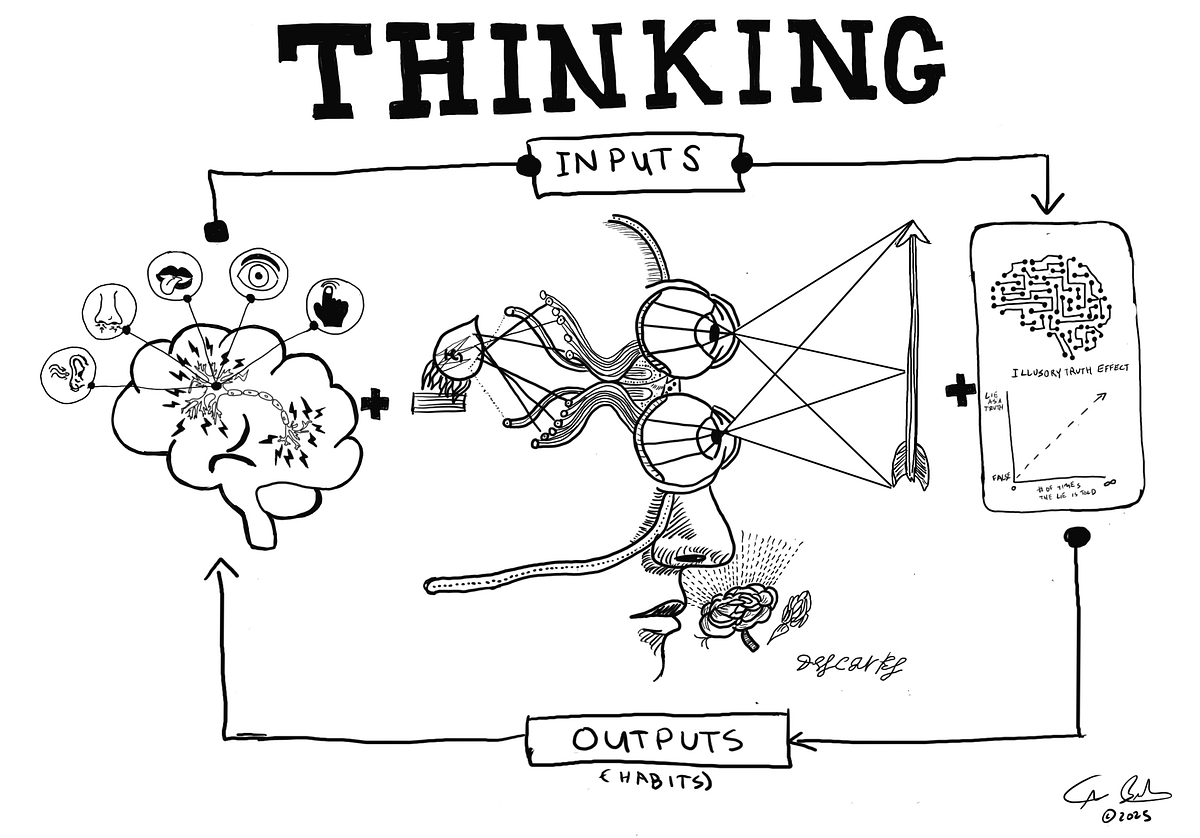
"A process for thinking Inputs (Your brain (senses Hearing, smell, taste, sight, touch) + Rene Descartes Theory of Vision + Smart Phone AI + Illustory Truth Graph) and Outputs (Habits) A while back, I captured this provocation on LinkedIn by Darren Hood, which got me thinking. What does it take to "Let Designers think"? Thinking is the value we bring. Let's discuss more ways to carve out "thinking" time."
"The comment was then punctuated by , who touched on the difference between corporate decision-making via "design thinking" and "thinking like a designer." Unfortunately, there remains a gap between "design thinking" as designers practice it and how companies implement "design thinking." But regardless, there is still an impulse among design practitioners to "think". Let's quickly review how we got here. Design Thinking refresher Design Thinking is the process (popularized by IDEO and the Stanford D-school) for how designers move through a problem-solving process."
Thinking produces design outcomes through a process that converts sensory and cognitive inputs into lasting habits. Inputs include the biological senses, visual theories such as Descartes', smartphone-enabled AI, and informational constructs like an Illustory Truth Graph. Designers must secure dedicated time to think and cultivate habits that support reflective, generative work. Corporate use of 'design thinking' often differs from practicing 'thinking like a designer,' creating a gap between practitioner methods and organizational implementation. The canonical design thinking stages—Empathy, Define, Ideate, Prototype, Test—remain central to moving through complex problem-solving cycles.
Read at Medium
Unable to calculate read time
Collection
[
|
...
]